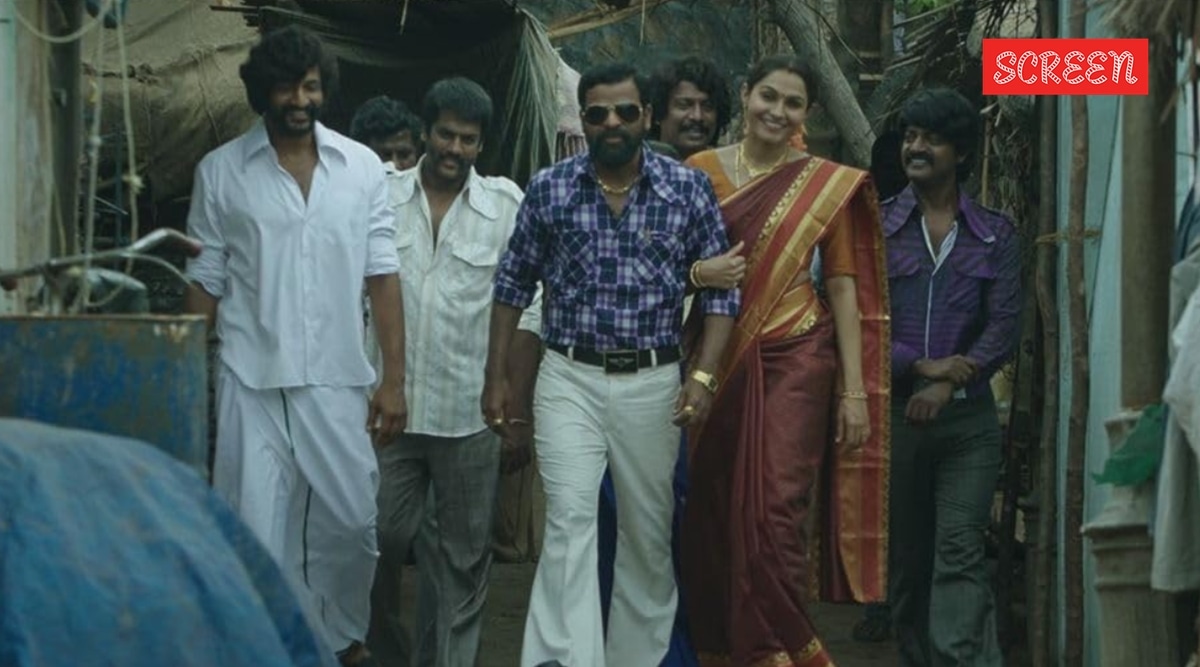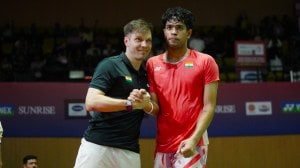Click here to follow Screen Digital on YouTube and stay updated with the latest from the world of cinema.
Vada Chennai turns 7: Vetrimaaran’s sprawling Shakespearean epic is still the gold standard for cinematic universe-coded storytelling
As Vada Chennai marks its seventh anniversary, we look back at what makes the Dhanush–Vetrimaaran collaboration special, and how it foresaw Tamil cinema’s growing fascination with cinematic universes.
 Vetrimaaran and Dhanush on the sets of Vada Chennai.
Vetrimaaran and Dhanush on the sets of Vada Chennai.When the announcement of Vetrimaaran’s first collaboration with Silambarasan for Arasan was made earlier this month, one question seemed to dominate film discussions: was this new project in any way connected to the Vada Chennai Universe? The sheer excitement and anticipation surrounding Arasan stand as a testament to the enduring legacy of Vada Chennai as a modern cinematic masterpiece. Although it underperformed at the box office upon its 2018 release, Vada Chennai has since evolved into a bona fide pop-cultural phenomenon. In a film landscape obsessed with indulgent sequels and sprawling multiverses, Vada Chennai made the intricate plotting, immersive setting, and narrative ambition of a cinematic universe feel effortless.
Vetrimaaran’s cinema has long been a wellspring of memorable character types and an organic mythology that naturally positions him as the ideal architect of a self-contained cinematic world. Long before the concept of cinematic universes gained traction in South Indian cinema through the Lokesh Kanagaraj Cinematic Universe (LCU), Vetrimaaran had already been crafting an interconnected body of work rooted in a common source: real-life stories. For his debut film, Polladhavan, was inspired by a friend’s account of a bike theft. In tracing the origins of that anecdote, Vetrimaaran discovered the man who had first told it, a veritable treasure trove of stories about local gangsters and the intricate power dynamics of North Chennai. Those tales became the guiding compass, the North Star, of his filmmaking journey.
With the exception of Asuran and Viduthalai: Part 1 & 2, Vada Chennai has served as the creative well from which Vetrimaaran has continued to draw inspiration over the years. Vada Chennai became a franchise not because of the industry’s growing obsession with sequels, but because of the sheer density and interconnectedness of its narratives and character arcs. A single film could never contain the wealth of detail, simmering rivalries, and political intricacies embedded within its story. Expanding Vada Chennai into a franchise feels almost inevitable, a logistical necessity to fully explore the layered relationships, shifting loyalties, and complex world Vetrimaaran so meticulously constructed.
These aren’t archetypes but rather vignettes of real people and situations that form a thoughtful meditation on collective identity and the weight of generational violence. Like a “script bible” for a television series poised for syndication, Vada Chennai begins and ends with its local conflict remaining resolutely local, never straining to expand beyond its own boundaries. Every clash feels perilously close to life and death, and no one emerges unscathed. Dhanush’s Anbu felt like just a piece of a long, sprawling puzzle. He never felt like the fulcrum around which Vetrimaaran placed his narrative, but one among many participants enmeshed in the ruthless power politics of a seaside village burdened by a long history of oppression. From its very first frame, Vada Chennai announced itself as an epic. You could sense the enormity of Vetrimaaran’s vision, with the first film serving merely as a tantalizing glimpse into a vast and intricate world.
Vetrimaaran’s film can be dissected endlessly, and with each viewing, the minutiae of its setting, time, and place crystallize further through the intricacy of their interconnectedness. Nothing in the world of Vada Chennai feels accidental. Anbu falling in love becomes a shared secret; his emergence as the “chosen one” who must shoulder the burdens of his isolated community feels like an age-old local myth. Nothing exists as a convenient narrative shortcut. This is intellectual property in the truest sense, one that explores the depths of human experience rather than a studio-mandated exercise in brand expansion. Every scuff mark and fragment of character detail contributes to the way the past resurfaces to haunt, propel, or restrain its players. Unlike contemporary cinematic universes, where twists and transformations are reverse-engineered from the plot, here the plot itself emerges organically, shaped by a web of impulsive, selfish, and deeply human choices that echo across time to define the characters’ fates.
There are no half measures or narrative shortcuts in the world of Vada Chennai. Every revelation carries the highest possible stakes for its protagonist. The film follows a prodigious carrom player who becomes entangled with two local gangsters in an effort to stay out of trouble in his neighborhood. His precarious position as a seemingly untrustworthy go-between is a secret shared only between Vetrimaaran and the audience. As viewers, we are taken along on a tense ride with a vulnerable yet unpredictable hero — one capable of manipulating circumstances to his advantage, even as his choices alter the very dynamics of the Vada Chennai universe. The pivotal moment when the hero switches allegiances at the interval, pledging loyalty to his rival faction, stands out as one of the most brilliantly executed set-piece turns in recent Tamil cinema, a sequence that not only electrifies the moment but cascades into profound narrative consequences in the film’s latter half. So, no action in Vada Chennai is impromptu or wayward, all details are being accounted for. Everything here is borne out of the central themes of deceit, betrayals and Shakespearean pathos.
 A still from Vada Chennai.
A still from Vada Chennai.
There are no side characters in Vada Chennai, only key players whose rivalries, egos, and histories intertwine to create the mythology of a place suspended in time. Each character feels like a real person, distilled through Vetrimaaran’s politically attuned, realist lens. Their flaws are rendered with such empathy that even their moral failings feel profoundly human. Chandra (Andrea Jeremiah) could easily have been reduced to a mere Lady Macbeth archetype, but the texture of her characterization, steeped in violent grief and searing betrayal, gives her a haunting complexity. Guna (Samuthirakani) is as pivotal to the film’s larger design as Anbu, especially in how events ultimately unfold. His complacency stems not from villainy but from an ungrateful, overambitious opportunism. Rajan (Ameer Sultan), meanwhile, looms large over the Vada Chennai universe. Even the brief glimpses into his life and legacy suggest the depths of a much larger story, the tip of an ever-expanding iceberg. The excitement surrounding Vetrimaaran’s prequel series, Rajan Vagaira, stands as proof of how profoundly this seemingly minor character resonated with audiences. Within the film, Rajan emerges as a figure of remarkable depth, as essential to the narrative fabric, if not more so, than the hero himself.
Vada Chennai is one of those rare cinematic universes that felt fully realized right from the outset. Its action springs organically from its characters, as Vetrimaaran traces their personal histories, loyalties, and ideologies, or the absence of them, to reveal how an entire community’s fate is shaped and reshaped. This is world-building at its most fluid and authentic: an intricately oiled machine where political positions, personal dramas, and individual quirks all coalesce into something larger than the sum of their parts. One can only look forward to the chapters yet to emerge from the sprawling text of Vada Chennai, of which the first film serves merely as a tantalizing prologue, a glimpse of greater, grittier stories to come, with Anbu standing as both participant and spectator in the unfolding expanse of this boundless universe.





- 01
- 02
- 03
- 04
- 05





























